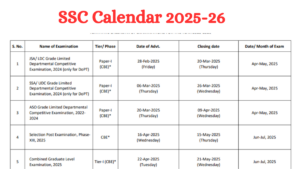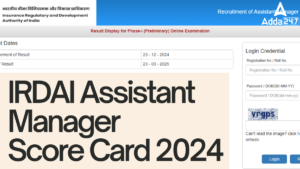The more you practice, the better you get. So, to let you practice and ace the score in the Reasoning Section of all the Banking Examinations, Bankersdda is proving you with Reasoning Questions and Answers on various topics. Try to attempt these question yourself to score in upcoming IBPS RRB PO Mains, IBPS RRB Clerk, IBPS Clerk, other banking and insurance exams.
Directions (1-5): Each of the following questions below consists of a question and two statements numbered I and II given below it. You have to decide whether the data provided in the statements are sufficient to answer the question. Read both the statement and Give answer
(a) If the data in Statement I alone are sufficient to answer the question, while the data in Statement II alone are not sufficient to answer the question
(b) If the data in Statement II alone are sufficient to answer the question, while the data in Statement I alone are not sufficient to answer the question
(c) If the data in Statement I alone or in Statement II alone are sufficient to answer the question
(d) If the data in both the Statement I and II are not sufficient to answer the question
(e) If the data in both the Statements I and II together are necessary to answer the question
Q1. What does ‘Pa’ mean in the code language?
I. ‘Pe Bo Pa’ means ‘Look at me’ and ‘Bo Se Pe Ki’ means ‘don’t look at him’ in that code language.
II. ‘Ka Ta Ne Pa’ means ‘take me and go’ and ‘Li Wa Si Pa’ means ‘either me or you’ in that code language.
Q2. How is Seema related to Mangesh?
I. Shalini, the cousin of Mangesh, is the niece of Seema.
II. Sulekha’s sister Seema who is wife of Omkar. Omkar is father of Mangesh.
Q3. What is Shekhar’s rank in the class of 40?
I. Samir, who is 9th from the top in the class is above Shailendra by 12 ranks who is below Shekhar by 5 ranks.
II. Nilesh, who is between Shekhar and Sudhanshu, is 15th from the bottom.
Q4. P, Q, R, S and T hold different ranks. Who among them ranks the lowest?
I. S is two ranks below R, who is not the highest in the rank.
II. P is higher in rank than S but below Q and T in rank.
Q5. Who among A, B, C, D and E runs the faster?
I. B runs faster than E but is not the fastest.
II. C, though does not run as fast as A and B, runs faster than D and E.
Directions (6-10): In each question below are three statements followed by two Conclusions numbered I and II. You have to take the three given statements to be true even if they seem to be at variance from commonly known facts and then decide which of the given conclusions logically follows from the three statements disregarding commonly known facts.
Given answer
(a) If only Conclusion I follows
(b) If only Conclusion II follows
(c) If either Conclusion I or II follows
(d) If neither Conclusion I nor II follows
(e) If both Conclusions I and II follow
Q6. Statements: All bulbs are tubes. Some tubes are knives. All knives are frames.
Conclusions:
I. Some frames are tubes.
II. Some knives being bulb is a possibility.
Q7. Statements: Some tents are houses. All houses are buildings. Some buildings are huts.
Conclusions:
I. Some huts are definitely not houses.
II. Some buildings are tents.
Q8. Statements: All goats are lions. No lion is tiger. Some tigers are horses.
Conclusions:
I. Some horses are goats.
II. No horse is goat.
Q9. Statements: Some beads are chairs. All chairs are desks. All desks are tables.
Conclusions:
I. Atleast some tables are beads.
II. Some desks are beads.
Q10. Statements: All mangoes are apples. All apples are bananas. Some bananas are grapes.
Conclusions:
I. Some grapes being mango is a possibility.
II. Atleast some bananas are mangoes.
Directions (11-15): Study the following information carefully and answer the given questions:
A, B, C, D, E, F, G and H are eight persons who belong to eight different countries viz. Australia, New Zealand, India, Pakistan, Sri Lanka, England, West Indies and South Africa, but not necessarily in the same order. All of them are seated around a circular table and facing towards the center.
A sits third to the left of one who belongs to Sri Lanka. Only two people sit between E and G. Neither E nor G is an immediate neighbour of A. Neither E nor G is from Sri Lanka. The one who is from South Africa sits second to the right of D. D is not an immediate neighbour of A. D does not belong to Sri Lanka and A does not belong to South Africa. The one who belongs to Australia sits third to the left of F. The one who belongs to Australia is not the immediate neighbour of one who belongs to Sri Lanka. Only one person sits between D and the one who belongs to India. The one who belongs to Pakistan and the one who belongs to New Zealand are immediate neighbours. D does not belong to New Zealand. Only one person sits between B and the one who belongs to England. The one who belongs to England is an immediate neighbour of H. G and B are not immediate neighbours.
Q11. How many people sits between E and the one who belongs to England when counted in clockwise direction from E?
(a) None
(b) One
(c) Two
(d) Four
(e) Five
Q12. Who is the from Australia?
(a) A
(b) F
(c) G
(d) E
(e) B
Q13. Who sits third to right of one who is from Pakistan?
(a) D
(b) H
(c) G
(d) B
(e) C
Q14. Which of the following is true with respect to the given seating arrangement?
(a) C is from South Africa.
(b) G is an immediate neighbour of F.
(c) A sits second to right of H.
(d) Four people sit between G and B.
(e) A sits second to the left of D.
Q15. What is the position of the one who is from of West Indies with respect to C?
(a) Immediate left
(b) Second to the left
(c) Third to the right
(d) Second to the right
(e) Third to the left
You May also like to Read:





 The Hindu Review October 2022: Download ...
The Hindu Review October 2022: Download ...
 SSC Calendar 2025-26 Out, Check SSC CGL,...
SSC Calendar 2025-26 Out, Check SSC CGL,...
 IRDAI Assistant Manager Score Card 2024 ...
IRDAI Assistant Manager Score Card 2024 ...




